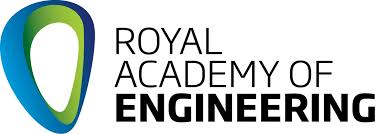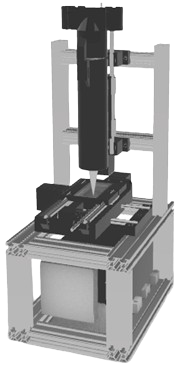About PapsAI
PapsAI is an integrated solution combining low-cost slide scanning technology with deep learning algorithms to detect cervical abnormalities from Pap smears and biopsy samples. It supports both light field and fluorescence imaging and is optimized for deployment in areas with limited healthcare infrastructure. Our Mission is to democratize access to cervical cancer screening through affordable, AI-powered diagnostic tools tailored for low-resource settings.

The Challenge
Cervical cancer is the leading cause of cancer-related death among women in Uganda and remains a major public health burden globally, with over 600,000 new cases and 340,000 deaths annually, 90% of which occur in low- and middle-income countries. Despite being preventable through early detection, access to effective screening remains limited. Pap smear, considered the gold standard and most widely used in resource-constrained settings, relies on manual microscopic analysis, which is time-consuming, subjective, and error-prone. This contributes to missed diagnoses and delayed care. Additionally, lack of affordable digital pathology makes it impossible to store or share images for telemedicine, clinical decision support, AI-assisted diagnosis, or follow-up. Existing digital pathology is expensive with limited uptake in low-resource environments, worsening disparities in cancer care.
PapsAI is the Solution
PapsAI is a low-cost, 3D-printed microscope slide scanner that digitizes Pap smears for AI-powered cervical cancer screening. It captures high-resolution images using a low-cost imaging system, supporting both brightfield and fluorescence modes. These are analyzed by AI to detect abnormal cells. Unlike expensive commercial scanners, PapsAI is affordable, portable, and locally manufacturable, ideal for low-resource settings. It enables digital archiving, remote consultation, decision support, and recurrence prediction. It features a motorized stage, objective lens, and webcam, with autofocusing via Fast Fourier Transform and GRBL-controlled precise movements as used in CNC machines.
PapsAI is modular, and battery-powered, operable without electricity and rechargeable via solar. It captures high-resolution images for rapid analysis using AI on a Raspberry Pi or connects to an online oncology information system for deeper, multimodal analysis. Its modular design allows standalone use for Pap smear digitisation or integration into broader cancer data systems. With more work in progress, we intend to develop PocketPapsAI, which will be developed for home-based screening of cervical cancer.
Our process
AI Analysis
PapsAI's deep learning model (CervixNet) classifies images into normal, precancerous, and cancerous stages.
Results & Reporting
Clinicians receive automated results and visualization of high-risk areas to support diagnosis and follow-up.
Our Use Cases
Clinical Diagnosis in district hospitals and health centers
Mobile Screening Units in rural areas
Medical Training with annotated images
Research & Public Health Surveillance
Our Key Features
AI-powered classification (2-class, 3-class, or 5-class)
Fluorescence and light microscopy support
Offline deployment on Raspberry Pi or edge devices
Integration with health information systems
Discover the Passion Behind Our Purpose
Our Mission is to democratize access to cervical cancer screening through affordable, AI-powered diagnostic tools tailored for low-resource settings.
Make an Make an AppointmentTechnology
3D printing
PapsAI consists of 70% 3D printed components. This makes it easy to replicate and locally manufacture
Deep Learning Mode
CervixNet (CNN-based) for automated diagnosis and classification of cervical cancer from pap-smears
Imaging
Light field and fluorescence microscopy to visualize and provide information about cellular components.
Platforms
Edge devices, Raspberry Pi, and Android-based apps, Stepper motors, GRBL library, Limit switch sensors
Telemedicine
Real time collaboration among pathologists to support multiple diagnosis from different experts.
Our Partners




Our Media
Publications
1. J. Zhang et al., “Moving towards vertically integrated artificial intelligence development,” npj Digit. Med., 2022, doi: 10.1038/s41746-022-00690-x.
2. W. William, A. Ware, A. H. Basaza-Ejiri, and J. Obungoloch, “Cervical cancer classification from Pap-smears using an enhanced fuzzy C-means algorithm,” Informatics Med. Unlocked, 2019, doi: 10.1016/j.imu.2019.02.001.
3. W. William, A. Ware, A. H. Basaza-Ejiri, and J. Obungoloch, “A pap-smear analysis tool (PAT) for detection of cervical cancer from pap-smear images,” Biomed. Eng. Online.
4. W. William, A. Ware, A. H. Basaza-Ejiri, and J. Obungoloch, “A review of image analysis and machine learning techniques for automated cervical cancer screening from pap-smear images,” Comput. Methods Programs Biomed., vol. 164, pp. 15–22, Oct. 2018, doi: 10.1016/J.CMPB.2018.05.034.
5. W. William, A. Ware, A. H. Basaza-Ejiri, and J. Obungoloch, “Automated Diagnosis and Classification of Cervical Cancer from pap-smear Images,” in 2019 IST-Africa Week Conference, IST-Africa 2019, 2019. doi: 10.23919/ISTAFRICA.2019.8764887.
6. Wasswa William, Annabella Habinka Basaza-Ejiri, Johnes Obungoloch, and Andrew Ware, “A Review of Applications of Image Analysis and Machine Learning Techniques in Automated Diagnosis and Classification of Cervical Cancer from Pap-smear Images,” in 2018 IST-Africa Week Conference (IST-Africa), 2018.
7. W. Wasswa, J. Obungoloch, A. H. Basaza-Ejiri, and A. Ware, “Automated Segmentation of Nucleus, Cytoplasm and Background of Cervical Cells from Pap-smear Images using a Trainable Pixel Level Classifier,” in Proceedings - Applied Imagery Pattern Recognition Workshop, 2019. doi: 10.1109/AIPR47015.2019.9174599.
8. W. Wasswa, “Automated innovation and impact,” Science (80-. )., vol. 384, no. 6691, p. 42, 2024.
9. M. A. Rahmoon, G. L. Simegn, W. William, and M. A. Reiche, “Unveiling the vision: exploring the potential of image analysis in Africa,” Nature Methods. 2023. doi: 10.1038/s41592-023-01907-x.
10. J. E. Alderman et al., “Tackling algorithmic bias and promoting transparency in health datasets: the STANDING Together consensus recommendations,” Lancet Digit. Heal., vol. 7, no. 1, pp. e64–e88, Jan. 2025, doi: 10.1016/S2589-7500(24)00224-3.
News
- https://papsai.org/
- http://innov.afro.who.int/innovators/wasswa-william-13
- https://pctechmag.com/2019/03/africa-innovation-challenge-finalists/
- https://www.afro.who.int/news/ugandans-among-top-contenders-who-innovation-challenge-award
- https://pctechmag.com/2020/01/ugandans-shortlisted-for-africa-prize-for-engineering-innovation/
- https://rightforeducation.org/2022/01/10/artificial-intelligence-the-future-of-cervical-cancer-detection-2/
- https://www.science.org/doi/10.1126/science.ado4541
- https://www.science.org/content/page/2024-bioinnovation-institute-science-prize-innovation-winners
Make an Appointment
Contact Us
Our Address
Mbarara, Uganda
Email Us
info.papsai@gmail.com
Call Us
![]() +256 775 046 515
+256 775 046 515
![]() +256 755 582 279
+256 755 582 279


